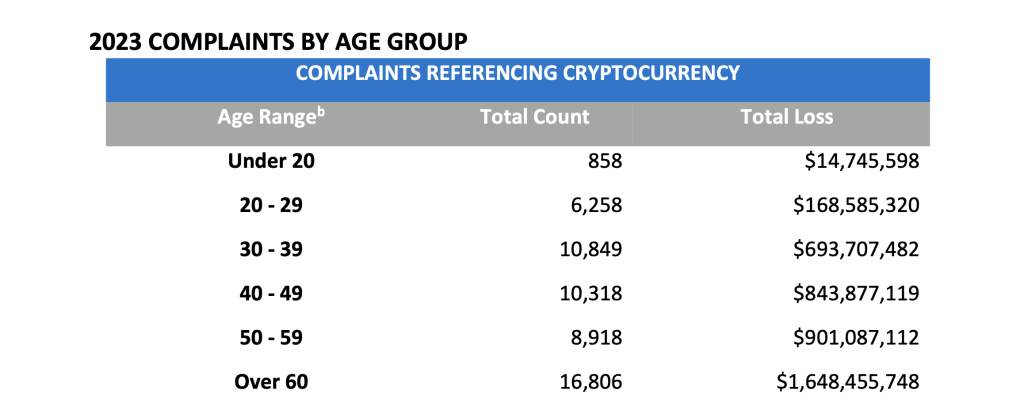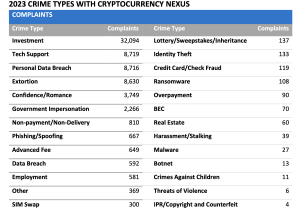Last updated:
 Why Trust Cryptonews
Why Trust Cryptonews

The Federal Bureau of Investigation’s (FBI’s) Internet Crime Complaint Center (IC3) latest report highlights the rise in cryptocurrency-related fraud, with estimated losses hitting $5.6 billion.
In a report, the FBI said, the IC3 received over 69,000 complaints involving financial crimes connected to cryptocurrencies such as Bitcoin, Ethereum, and Tether.
Although these cryptocurrency-related complaints comprised only 10% of all financial fraud reports, they accounted for nearly half of the total losses.
The agency reports a staggering 53% increase in losses was observed in cryptocurrency-linked investment fraud schemes, with total losses jumping from $2.57 billion in 2022 to $3.96 billion in 2023.
FBI Says Older Individuals Suffered Greatest Financial Losses
Many victims of these fraudulent schemes were left in severe financial distress, with some accumulating substantial debt in an attempt to recover from their losses.
The report found that individuals aged 30 to 49 filed the highest number cryptocurrency-investment fraud complaints, with about 5,200 reports in each of the 30-39 and 40-49 age groups.
However, it was older individuals—those over the age of 60—who suffered the greatest financial losses, reporting more than $1.24 billion in total.

The exploitation of cryptocurrency spans across nearly all fraud categories tracked by the IC3. Investment scams were the most dominant, accounting for approximately 71% of all cryptocurrency-related losses.
Call center frauds, which often involved tech support and government impersonation scams, represented about 10% of these losses.
The decentralized nature of cryptocurrencies, combined with the speed and irreversibility of transactions, as well as the ability to move funds globally, made cryptocurrencies a prime target for criminal activities.
Scams Include Liquidity Mining, Fraudulent Play-to-Earn Gaming
So among all the latest fraudulent schemes, “liquidity mining scams” have become increasingly prevalent.
Liquidity mining, in its legitimate form, involves investors staking their cryptocurrency in a liquidity pool to help facilitate transactions, in exchange for a share of trading fees.
Scammers have taken advantage of this concept, particularly targeting holders of popular cryptocurrencies like Tether and Ethereum.
Fraudsters will often build a rapport with their targets over days or weeks, convincing them to link their cryptocurrency wallets to a fake liquidity mining platform by promising lucrative returns of 1-3% daily. Once the wallet is connected, the scammers drain the victim’s funds without their knowledge or consent.
Now another emerging trend is “fraudulent play-to-earn gaming applications” where criminals lure unsuspecting victims by advertising games that offer cryptocurrency rewards.
In these scams, criminals first form an online relationship with the target, then introduce them to a game where they can earn cryptocurrency by engaging in in-game activities, like growing crops on a virtual farm.
To participate, players are instructed to create a cryptocurrency wallet and fund it. As the victims play, they see their in-game rewards growing, which prompts them to deposit more money.
However, once they stop adding funds, the scammers use a malicious program embedded in the game to steal their cryptocurrency. Victims are often told they can recover their money by paying additional taxes or fees, but they never regain access to their funds.

















